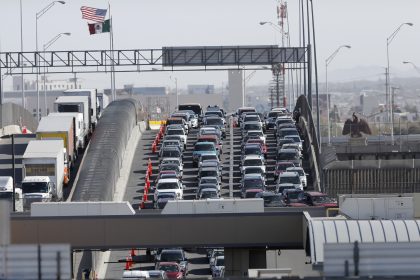Future of DACA Is Unclear on Its 10th Anniversary

WASHINGTON — Ten years ago in a Rose Garden ceremony on June 15, 2012, President Barack Obama unveiled the Deferred Action for Childhood Arrivals program, which protects undocumented adolescents from deportation and provides them with a work permit.
It was, in fact, a Hail Mary, an attempt to do something on the illegal immigration front after being stymied by Congressional Republicans on broader immigration reform.
Who more deserving of aid, the Obama White House reasoned, than illegal immigrants who were brought into this country as children by their parents or other adults.
Ten years on, the DREAM Act, remains a deeply partisan issue. As a result, even as the Biden administration fights to fortify the program, its future remains unclear.
In order to be considered for DACA, immigrants over the age of 15 must meet the requirements the U.S Citizenship and Immigration Services have laid out for the program. Approval is determined on a case-by-case basis and lasts for two years, but applicants are able to reapply.
Some of the requirements include applicants having arrived in the United States before the age of 16, having been physically present in the country on June 15, 2012 — the day the program began — and the absence of a felony record.
Speaking at the Rose Garden ceremony 10 years ago, Homeland Security Secretary Janet Napolitano stated that, “Our nation’s immigration laws must be enforced in a firm and sensible manner.
“But they are not designed to be blindly enforced without consideration given to the individual circumstances of each case. Nor are they designed to remove productive young people to countries where they may not have lived or even speak the language. Discretion, which is used in so many other areas, is especially justified here,” Napolitano added.
According to the USCIS, DACA helped over 800,000 “Dreamers” from 2012 to 2017.
In marking the anniversary on Wednesday, Senate Majority Leader Chuck Schumer, D-N.Y., said it’s time for his Republican colleagues to help “pass legislation that will offer ‘Dreamers’ the pathway to citizenship they deserve.”
“For 10 years, the DACA program has provided protections to hundreds of thousands of young immigrants, many whom have only known life in America,” Schumer said. “Since its beginning, DACA has endured because the American people understand that DACA recipients are Americans in every sense of the word. They’re the doctors, nurses, farm workers, grocery store clerks and teachers who were on the frontlines of the pandemic and contributed to our economic recovery, often risking their own lives in the process. They represent the very best of us, and just as many of them have sacrificed and contributed to this country, we too must fight alongside them to secure their future.”
House Majority Leader Steny Hoyer, D-Md., struck a similar note as he reflected on the fact that “[‘Dreamers’] generate billions of dollars for our economy and help build stronger and safer communities. It would be detrimental to America’s success to lose their talent and dedication.”
“We must find a way to ensure that ‘Dreamers’ can stay here and continue giving back to the country they love, their home,” Hoyer continued. “Those brought here as undocumented minors ought to be seen as fully American, and I believe our laws ought to recognize them as such with a pathway to legal permanent status.
“So far, Senate Republicans have blocked all of these measures, keeping millions of families living under the specter of deportation and separation from loved ones. I strongly urge them to work with Democrats to achieve long-sought reforms that end this uncertainty for ‘Dreamers’ and others and fixes our broken immigration system,” he said.
Data from FWD.us on the original DACA recipients shows how they compare and have grown with the program since originally receiving aid in 2012.
Since 2012, 99% of ‘Dreamers’ have finished high school and have a median income of $26,000, compared with the original $4,000 that they were making in 2012. Eighty-five percent of these recipients are now in the labor force. This number has increased by 25% since 2012.
When former President Trump attempted to rescind DACA in 2017, attorneys general from several blue states sued in federal courts in California and New York to keep the program alive.
The Supreme Court ultimately decided that the Trump administration had inappropriately ended DACA, but did not weigh in on the question of the program’s legality.
Last year, following a 2018 suit led by Texas, U.S. District Judge Andrew Hanen ruled that DACA itself is illegal and blocked the Biden administration from adding new beneficiaries to the program.
The case will be heard on appeal by the conservative Fifth U.S. Circuit Court of Appeals in July.
Speaking on Capitol Hill on Wednesday, House Speaker Nancy Pelosi, D-Calif., referred to the case as one “we want to win, but we need to be prepared.”
“We need to be prepared to make respect for our ‘Dreamers’ the law of the land. … Every newcomer to our country is affected by this. But all of us know that what we have to do is not only maneuver in the House and Senate, but mobilize in the country. The American people support ‘Dreamers.’ We need them to weigh in with other elected officials here in Congress.”
Natalie can be reached at [email protected] and @nataliemcc212
























